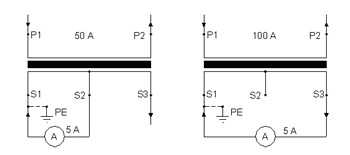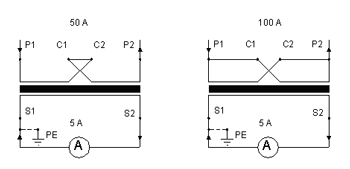Degrees of precision Degrees of precision in current instrument transformers
We measure high voltage for you
using instrument transformers for both outdoor and indoor applications, special transformers, sensors and power transformers
Degrees of precision in current instrument transformers
KPB Intra s.r.o.
Ing. Josef Stejskal
The following article discusses the characteristics of current metering transformers (hereinafter CMT) in relation to the occurrence of a broader demand from customers. In recent years, the problem of continuously larger variability has arisen in the collection of electrical energy in connection with alternating day and night or even in seasons (summer, winter, etc.). The interest of distributors and collectors of electrical energy is the most accurate metering in a relatively broad scope. At CMTs, switching design has been used in practice, which enables the use of two nominal currents where the higher current, as a rule, is two times lower. Another principle is a transformer with a single nominal current, but the structural materials enabling a broad scale for metering are defined by the so-called “S” class (special). Below is a description of the principle of switching, the degrees of metering a switchable version and comparing it with the “S” class. Current switching is performed either on the primary or the secondary side. On the secondary side, this is structurally simpler and current switching is resolved by a turn in the secondary coiling. The method for connecting is apparent from the diagram in fig. 1 (design 50-100//5A ).
| Fig. 1 | Fig. 2 |


Primary switching is conducted by a serial (for lower current) or parallel connection (for higher current) in sections of the primary coiling, see fig. 2. The advantage is the achievement of short-circuit classes relative to the switched current (a lower current has a cross-section of coiling determined by a profile section while a higher current has a cross-section of the coiling two times the profile section). In comparison with the first method, this is more difficult in production, which will have its own effect on the final price.
The degree of precision of both switchable versions is provided by the standard ČSN EN 600 44-1 and is noted in fig. 3. From the image it is apparent that the required degree of precision of 0.5% is maintained in the field of 100 to 120% of nominal current both at lower as well as higher current switching (noted by a dark marks in the blue field). The precision corridors are then spread out in the direction toward smaller currents (black lines) so that at 20% current, precision achieves 0.75% (simply stated precision deteriorates).
| Fig. 3 |

The relatively small degree of precision in the switchable design is assumed by the “S” class (special). According to the aforementioned norms, precision is guaranteed in the range from 20 to 120% of the nominal current. On the graph, corridors are marked by a dark blue line and the precision field is light blue. When ordering, this is stipulated as “0.5S”. If we compare the price of switchable versions with the “S” class, it is possible to state in general that the “S” class is less expensive by the difference related to the value of the primary current. Another significant advantage of the “S” class is the fact that it is not necessary to switch and conduct related installation work linked to the contracted switching of high voltage in advance.
In conclusion, there is little left than to recommend the “S” class as the design with a more universal application at a reasonable price.